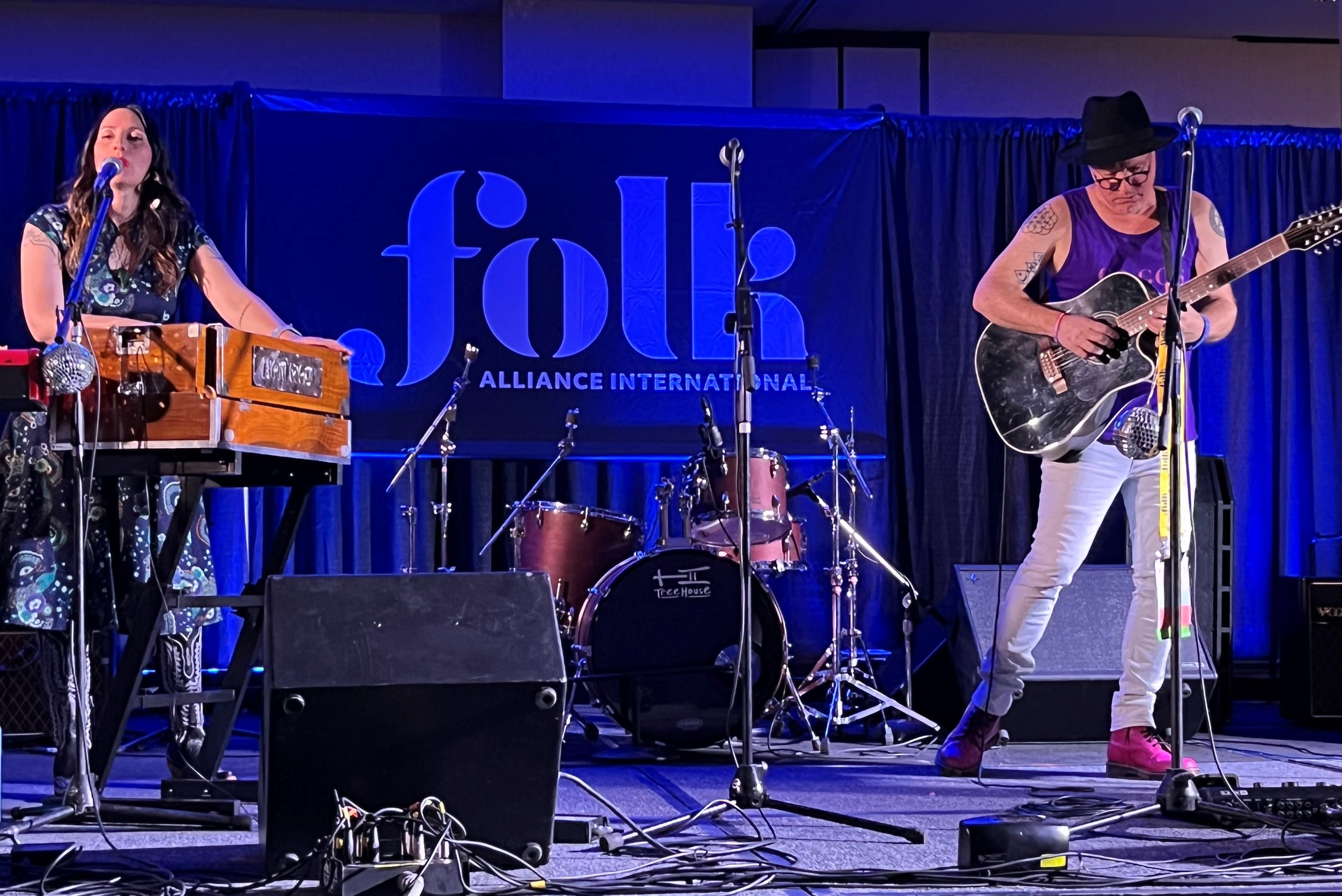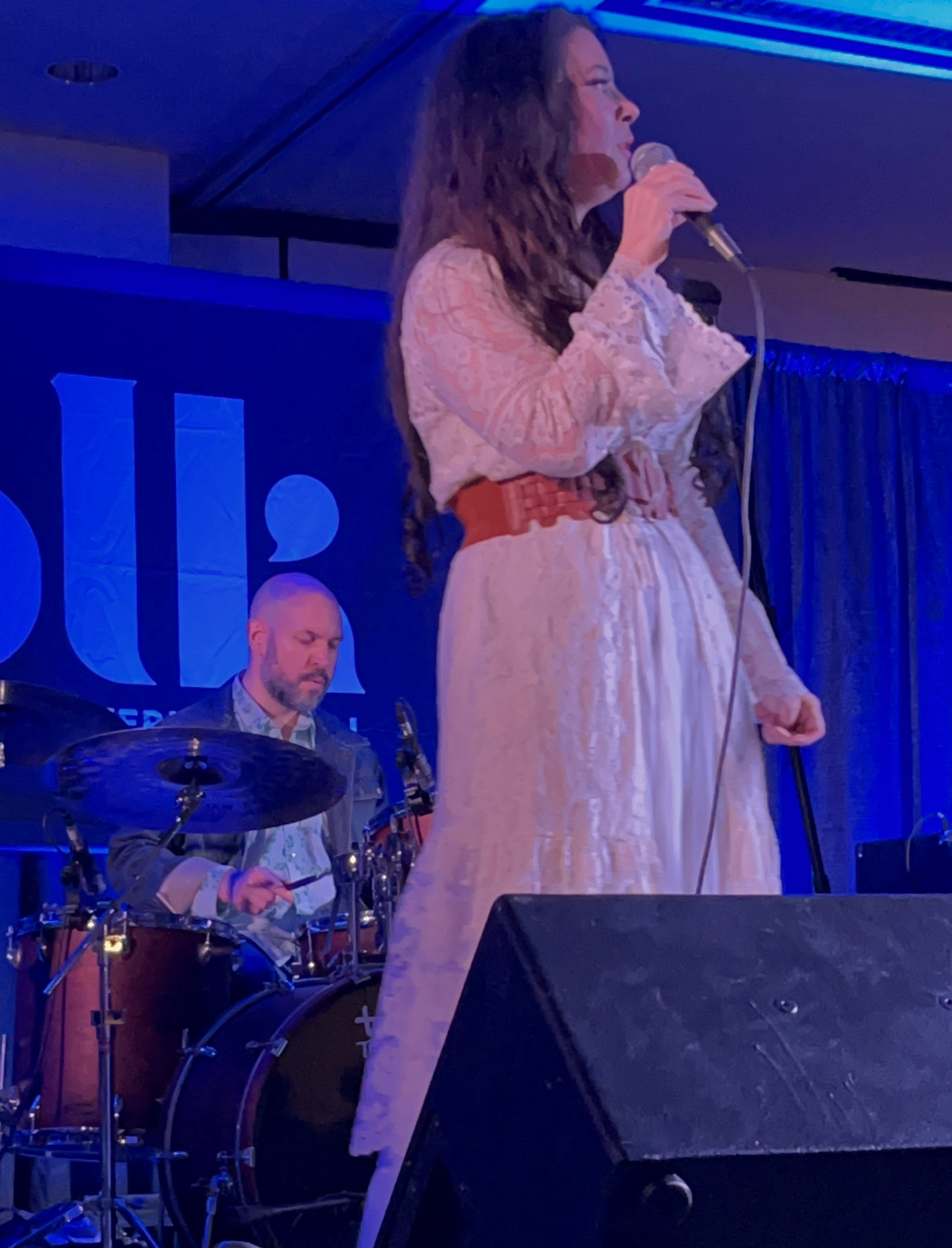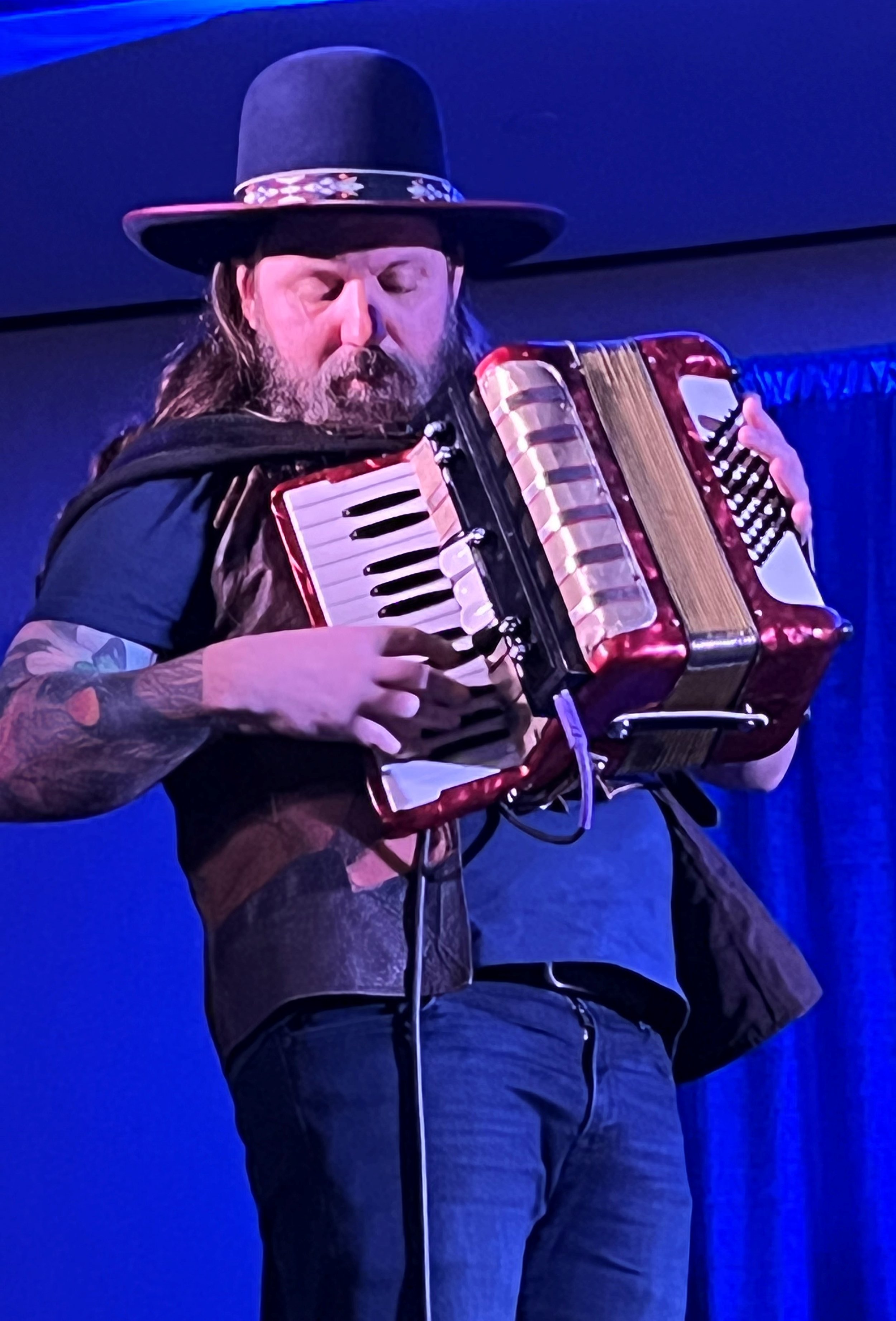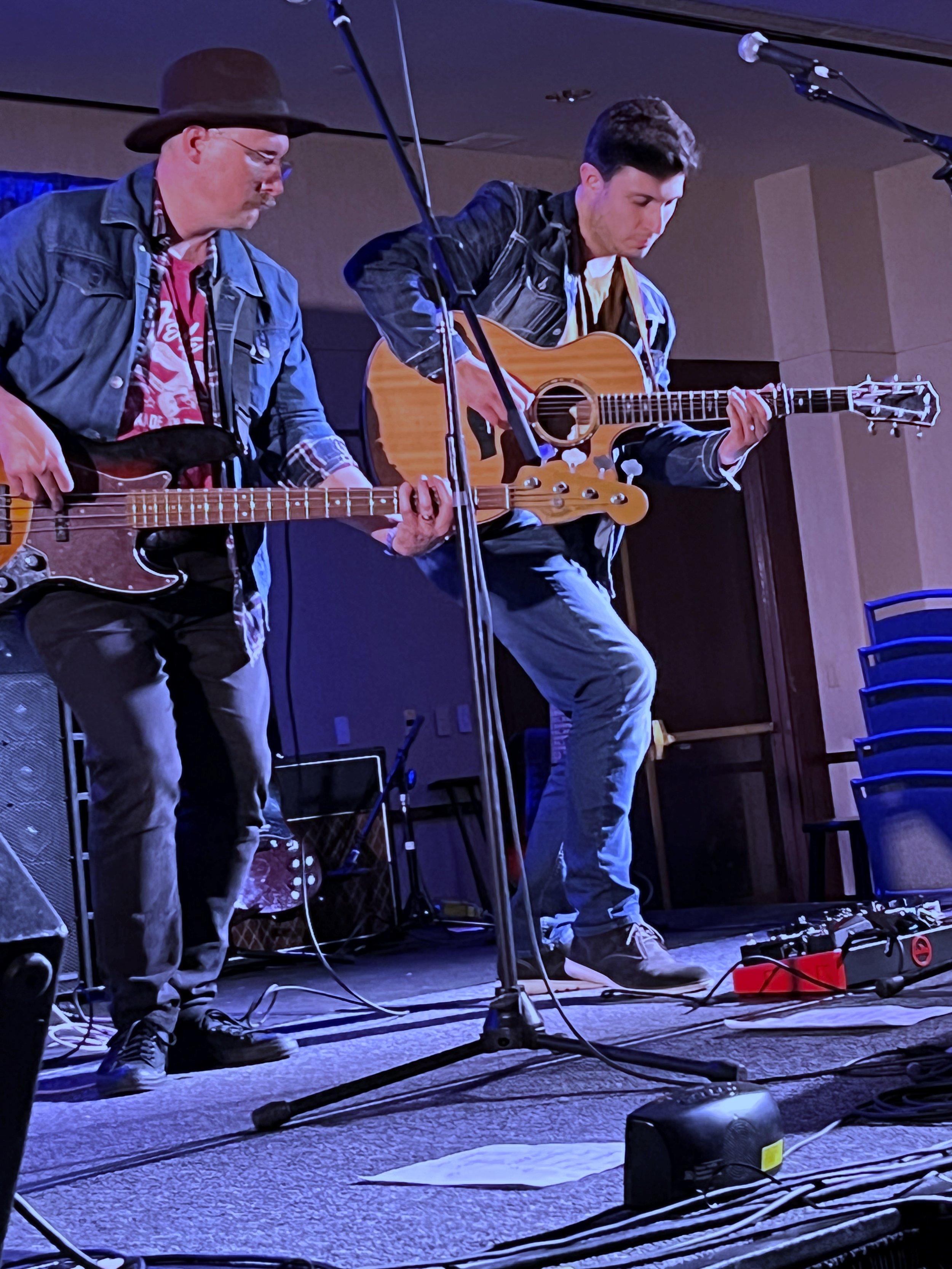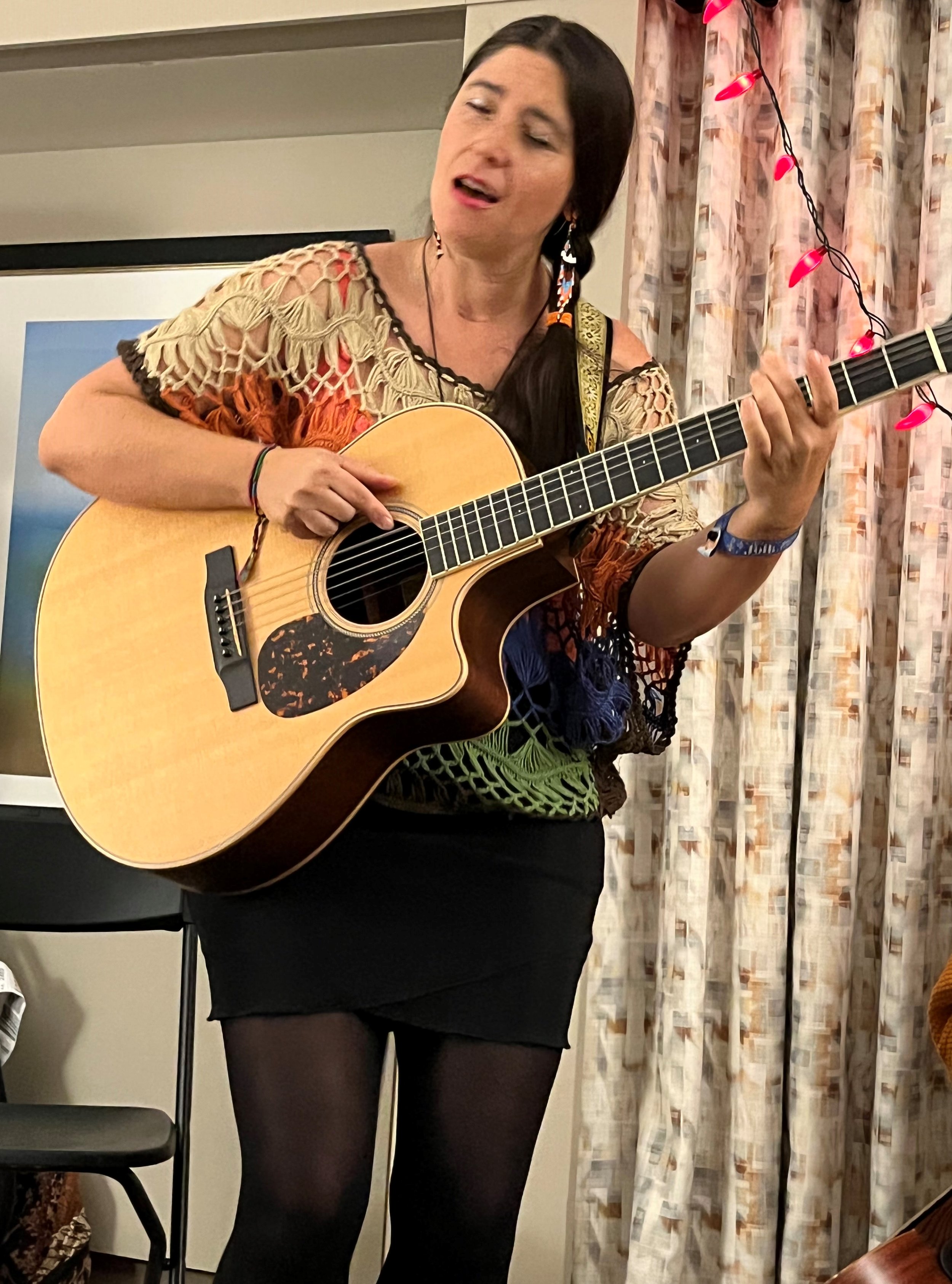Event Review: 2022 Folk Alliance International Conference in Kansas City, Missouri, Day Four
FAI’s first-ever hybrid conference in late May was a wild (and rewarding) ride for this first-timer. This is the final piece of an immersive four-part series about my experience.
If you haven’t seen the previous articles, you can catch up on day one, day two and day three. Otherwise, let’s dive in!
Day 4: Final day and takeaways
My first event of the day made me slightly nervous: a peer session for media and publicity pros. Although I take Adventures in Americana very seriously, I’m far from a pro. Everyone in the group had way more experience and clout and make their living in the industry. But I was pleasantly surprised that everyone genuinely treated me as a peer, asking about my experiences and offering useful advice about ways to up our game.
Next was a virtual panel discussion about being part of social change in the music industry. The uniformly impressive panelists (including Allison Russell) offered healthy doses of both inspiration and practical advice based on lived experience on how one person’s small actions and conversations can contribute to systemic change in time. As Allison put it, “We all have a sphere of influence, no matter how small.” It’s something AiA co-founder Jaclyn and I talk about and try to implement in what we do, so it was encouraging to hear that even though our platform is small, it’s worthwhile to contribute what amount of change we can!
Ayappa Biddanda, Tao-Ming Lau, Leslie Fram and Allison Russell. Photo by Carol Roth.
Those were the only non-performance events I’d wanted to catch on Saturday, so the latter part of the last day was spent, gloriously, soaking up as much music as I possibly could.
I decided to step out of my rootsy folky country comfort zone for the first official showcase I attended: HuDost, an electric/folk/global/rock duo who hail from Nashville and Montreal. Although they weren’t a style I’d normally gravitate to, their diverse set included experimental as well as slightly more traditional songs, and a fascinating boxy instrument with an accordion-like side. I learned it was called a harmonium, and you’d know the sound if you heard it; it’s used in a number of songs (including Sarah King’s “Nightstand”!) but is mostly commonly associated with Indian music, such as Bollywood songs.
HuDost. Photo by Carol Roth.
I continued my outside-the-box choices by checking out the a capella group Windborne, who do original and reimagined songs of social struggle, such as labor songs. One of their members Jeremy had been the most convincing proponent of TikTok in the panel discussion on day 3, so I just had to see the group whose songs had occasionally gone viral on the platform to the tune of millions of views. Although a capella isn’t my style anymore than experimental electronic music, I thoroughly enjoyed the mix of humor and heartfelt protest that infused most of their songs.
Windborne. Photo by Carol Roth.
I continued the day’s curiosity quest and decided to check out a group completely unknown to me, The Hello Darlins. Mainly I liked their name, so I decided to give them a chance. Much to my delight, they were right up my alley! A collection of session musicians who’d decided to create their own group, they often took turns singing vocals and even sometimes trading instruments. They kicked off the set with a rootsy rendition of “Will the Circle Be Unbroken” and followed it with a slew of original country tunes that spoke straight to the heart.
The Hello Darlins. Photos by Carol Roth.
Buzzing happily from that surprise discovery, I trekked over to one more official showcase and another new-to-me group: Mama’s Broke. This unassuming-looking duo of multi-instrumentalist women blew the roof off with prodigious playing and harmonizing on a range of old-timey American and global folk music. The gasps, cheers and whoops this seated, all acoustic pair drew from the audience proved they were musicians’ musicians.
Mama’s Broke. Photo by Carol Roth.
After remembering to grab dinner (a major accomplishment for me on this trip) I headed back to my room where my roommate Alice Hasen and her temporary bandmate Gavin Mendonca (aka Creole Rock) were relaxing as well. We talked about FAI’s strong commitment to diversity but how there was still so much more to be done. (As far as he knew, Gavin was the first attendee from Guyana in its 30-plus years of existence, for example. FAI’s making a good effort, but he pointed out that traveling to it can be prohibitively expensive from some countries, and international connections still seem to be more focused on Europe and Canada.)
Alice talked about how it’s difficult to quantify how beneficial to an artist’s career it is to attend FAI. “It’s like this artificial, made-up world where everything’s backward,” she said. She explained that working musicians are used to getting paid for gigs (regardless of how profitable they end up being), selling merch, and sleeping wherever you can. At FAI, by contrast, you often pay to attend, rent a swanky hotel room, at times put up a nominal fee to appear in showcases, and give away CDs and T-shirts to whoever wants them.
Gavin said he’d been talking about the same thing with some other attendees: Given the cost involved, what’s the value to artists? But, he concluded: “Think about the human interaction and human connections. Sharing my culture is a privilege, for me and for those I share it with. Detaching the value from a monetary perspective, you can’t really put a price on the experience, even if it’s one little memory with an artist in a showcase room. It’s a real human experience that will help us become better humans.”
Soon it was time for the late-night showcases, and we went our separate ways, though we’d encounter one other repeatedly. My first private showcase was a completely acoustic song swap (no mics or PAs) between three amazing artists: Austin-based Vanessa Lively, whose soulful voice and sharp, percussive acoustic guitar effortlessly filled the small room; Shanna in a Dress, spinning some mental roulette wheel to decide whether her next song would have us in stitches or tears; and North Carolina singer-songwriter Wes Collins, whose evocative lyrics painted pictures and told life stories in a few potent verses.
Vanessa Lively, Shanna in a Dress and Wes Collins. Photo by Carol Roth.
Sadly, I was torn away after only a song or two from each because I wanted to see Rachel Maxann take the lead on her showcase, with Alice backing her up. I was delighted by her warm, appealing voice, having only heard her play backing guitar for Alice before, and her style: bluesy folk with hints of country in it. I figured anyone who was about to open for Valerie June would have to be amazing, and I was right about that!
Rachel Maxann. Photo by Carol Roth.
I took in one more new-to-me act that night, Chris Pierce. I’d read a description of his new album, a fiery collection of protest songs and social commentary, but had decided to wait and hear it live first. I was so glad I did—he left it all on the floor of that little hotel room with a powerhouse vocal delivery that went from crooning to screaming depending on the song, energetic acoustic guitar and frenetic harmonica—I’m not sure I’ve ever heard that much ferocity in a harmonica solo before! His songs spoke unflinchingly on a wide range of social justice issues with a resounding call to not be silent or stand on the sidelines.
Chris Pierce. Photo by Carol Roth.
Thoroughly blown away, I had enough in me for one more set. As it happened, I ended the conference the way I started it: with a set from my favorite, Sarah King. It was bittersweet, but at least I went to sleep that night with her voice ringing in my ears and a renewed determination that I’ll find a way to see her live again someday.
Sarah King. Photo by Carol Roth.
The next morning I said goodbye to Alice, already missing our time together, and headed out on the road, my mind full to bursting with all the experiences and insights I’d encountered over the four days.
As I was putting this series together, Mark Rubin (aka Jew of Oklahoma, whose set I saw on day 2) reached out, since we’d hoped to connect at the conference. He’s attended FAI since the 1990s, so I asked about his experience this year. “Very subdued and lightly attended,” he responded. “It reminded me of early events, before they became the major happenings of recent years. But I knew going in there were only going to be 1,200 in attendance and not so many industry folks, who tend to be older and more concerned about health issues.”
I asked what he’d hoped to achieve and how it went. “Many folks go to these events with only nebulous ideas about what they’re doing and leave confused and upset,” he said. “I’d released a record during the pandemic that was very well received and I wanted to continue that momentum by getting in front of as many press, radio and industry folks as I could, ultimately looking to secure more bookings. Whether I achieved my goals remains to be seen. I overheard people I don’t know talking about me positively, so if I created any buzz at all, and if my brand is in the air, then I’ll consider the expenses and effort fully worth it.”
It was striking that the event was subdued to a veteran attendee and sensory overload for a newcomer like me, but that even if it was underwhelming, even a seasoned FAIer like Mark got something out of it. When I asked what his favorite moments were, his thoughts reflected what first-timer Gavin had said as well as the cornerstone of keynote presenter Madeleine Peyroux’s speech: “Those random moments bumping into old friends in the hallway and sharing a simple human moment after being removed from each other for so long. Lots of hugs.”
Overall, as a journalist, general devotee to Americana music, and someone trying hard to learn more and be of more use in this community, I got more enjoyment and education out of this event than I ever could’ve predicted. Besides discovering at least a dozen amazing new acts, I came away with ideas to improve our platform and inspiration to use it for good: to better promote and support artists, effect social change through what we do, and above all, to carry on and bolster a tradition that matters to nearly all of us: gathering.
Carol Roth is a full-time marketing copywriter and the main music journalist and social media publicist for Adventures in Americana. In addition to studying the guitar and songwriting, Carol’s additional creative side hustle is writing self-proclaimed “trashy” novels under the pseudonym T.A. Berkeley!


